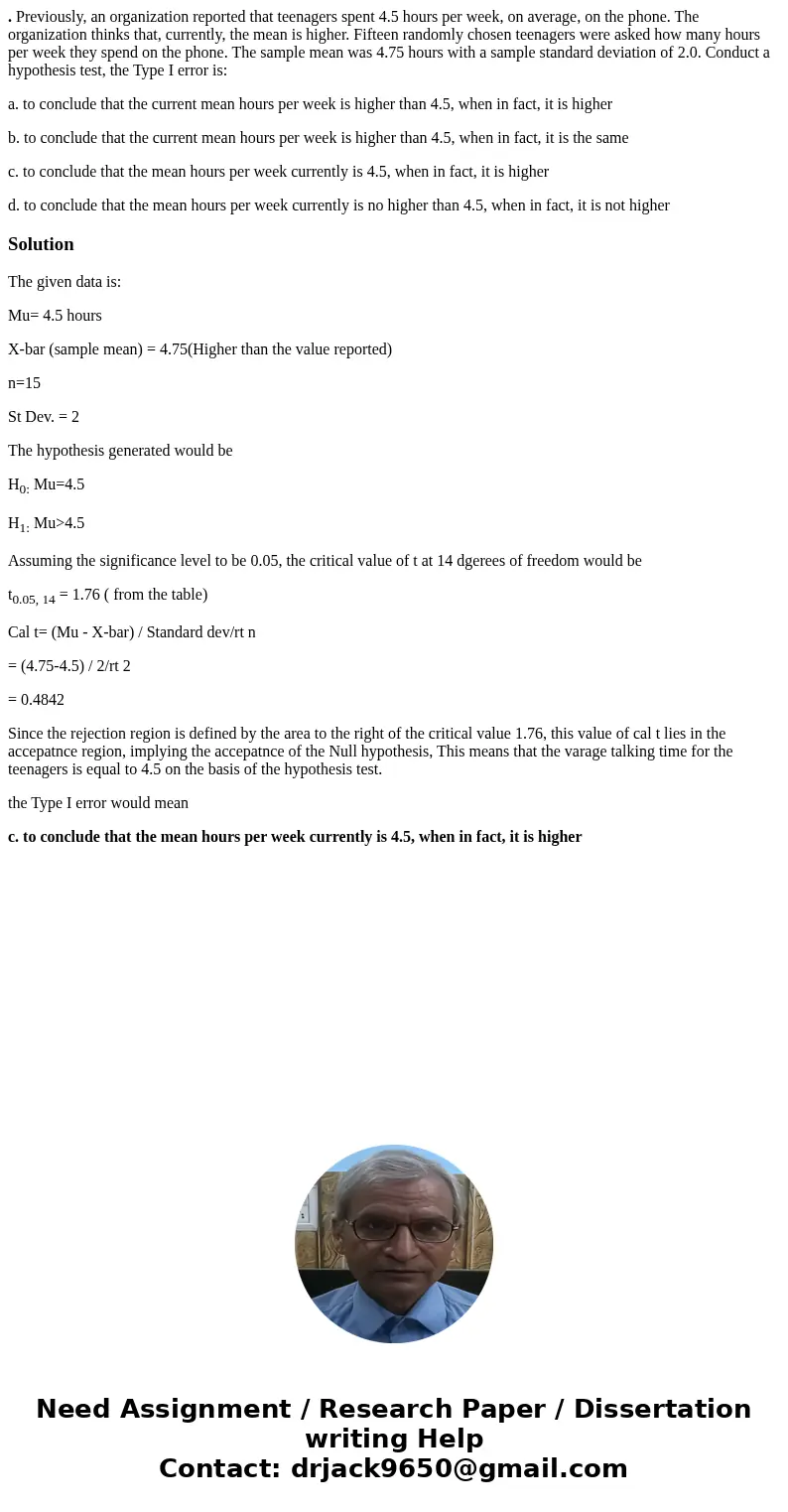Previously an organization reported that teenagers spent 45
. Previously, an organization reported that teenagers spent 4.5 hours per week, on average, on the phone. The organization thinks that, currently, the mean is higher. Fifteen randomly chosen teenagers were asked how many hours per week they spend on the phone. The sample mean was 4.75 hours with a sample standard deviation of 2.0. Conduct a hypothesis test, the Type I error is:
a. to conclude that the current mean hours per week is higher than 4.5, when in fact, it is higher
b. to conclude that the current mean hours per week is higher than 4.5, when in fact, it is the same
c. to conclude that the mean hours per week currently is 4.5, when in fact, it is higher
d. to conclude that the mean hours per week currently is no higher than 4.5, when in fact, it is not higher
Solution
The given data is:
Mu= 4.5 hours
X-bar (sample mean) = 4.75(Higher than the value reported)
n=15
St Dev. = 2
The hypothesis generated would be
H0: Mu=4.5
H1: Mu>4.5
Assuming the significance level to be 0.05, the critical value of t at 14 dgerees of freedom would be
t0.05, 14 = 1.76 ( from the table)
Cal t= (Mu - X-bar) / Standard dev/rt n
= (4.75-4.5) / 2/rt 2
= 0.4842
Since the rejection region is defined by the area to the right of the critical value 1.76, this value of cal t lies in the accepatnce region, implying the accepatnce of the Null hypothesis, This means that the varage talking time for the teenagers is equal to 4.5 on the basis of the hypothesis test.
the Type I error would mean
c. to conclude that the mean hours per week currently is 4.5, when in fact, it is higher

 Homework Sourse
Homework Sourse